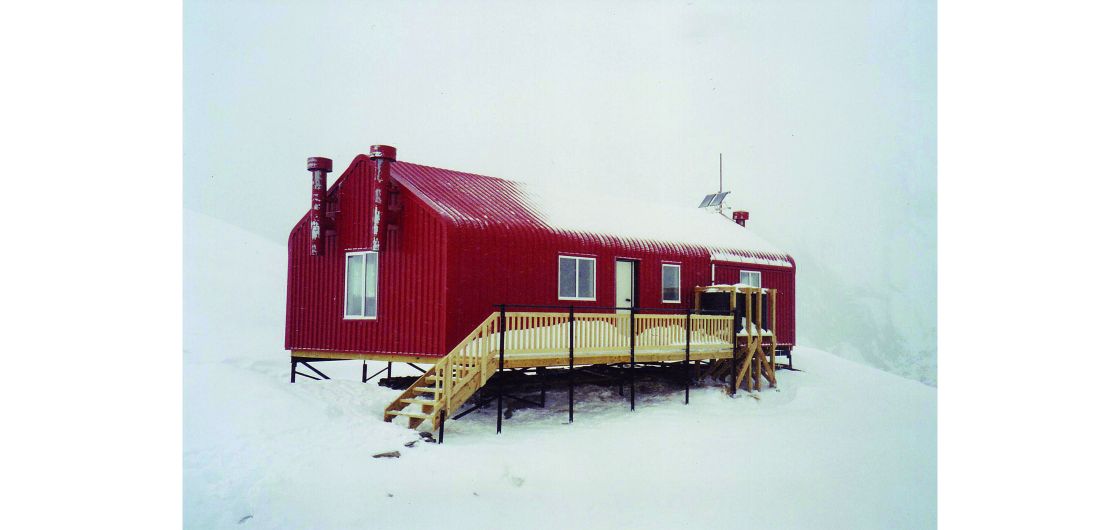
Booking of Alpine Huts - An important step to keeping our huts sustainable for the future
By Richard Wesley
The great New Zealand outdoors has had a long history of unbooked huts, welcoming users on a first come first served basis. Concepts such as ‘topping and tailing’ were created to make the absolute best use of limited mattress space, with plenty of floor space for late comers. Hut fees didn’t exist, or if they did nobody bothered getting around to actually paying them. At busy times like long weekends, or at easy access huts, crowding could be a bit of a problem on occasion.
Now there are the DOC Great Walks, along with an increasing number of extremely heavily used weekend family friendly huts, all booked via the DOC booking system. Often coming complete with hut wardens, one person per mattress is expected, no campers are allowed inside the hut, and of course the maximum occupancy is equal to the number of bunks provided. Nobody is allowed to sleep on the floor anymore. Every Saturday night is booked out for 12 months ahead. Income however matches this restricted usage much better on the finance system.
So NZAC is now also moving to a booking system for alpine huts, starting with French Ridge hut, and moving onto Colin Todd, Centennial and Pioneer in due course. The main reason for taking the decision to move in this direction is financial. We want these huts to exist for decades to come, not fade away and be progressively removed, which is actually the alternative of staying with the casual honesty box system.
The alpine huts that NZAC operate in the high mountains are expensive to operate and maintain. Compliance standards, engineering requirements, and environmental operating costs (flying poos) are ever increasing. We need every dollar from users via hut fees (and membership fees) just to stay afloat, and so we need the improved income that a booking system provides.
We as a Club want a booking system and ethos tailored to climbers though, not tourists, and we want our huts to be an open welcoming ‘shelter from the storm’ at all times. So how do we make this work for us, and what are the pros and cons and how can we make the best of this new reality?
The Pros to Promote:
- Overcrowding may reduce at huts with booking, as people can see when the hut is busy and make other plans. When there are a huge number of people and the facilities are completely overrun, it can make for a very poor experience. However, let's face it, when the conditions are good and there is a great weather window, we all want to be out there doing it.
- Booking provides certainty for some hut users that there will be a bunk available, and for others at least you know if you need to carry a bedroll and/or tent. Booking an NZAC alpine hut does not give exclusive use of the hut, but really just first dibs on some mattress space. Campers are welcome to make use of the hut, but must pay hut fees to support the facility, and of course the use of the toilet.
- Having people book gives us great data on usage which we can use for funding and grants, with DOC, and in national park plan discussions. For many huts the actual usage does not match the income, and it becomes really difficult to justify their existence in these cases. We do not want to lose alpine hut facilities just because people ‘don’t like booking’.
- With better user numbers and data we should be able to manage the huts more efficiently, for example scheduling toilet drum change overs which is a major expense. If bookings help spread the use of certain huts then it also helps reduce our environmental impact. Overcrowding will stress fragile environments, and stress out our huts which are already in an extreme environment with the extreme weather..
The Cons to Think About:
- People always talk about booking systems not allowing last minute trips. However there is no evidence of this. Alpine huts in New Zealand are not great walk huts which are booked months in advance. And remember that if the huts are overcrowded, it will make no difference to last minute trips when you would have been sleeping outside or on the floor anyway.
- When the weather forecast doesn’t play ball there is a refund policy. It's usually clear three days out if you are going or not. You can also change the dates of your booking to push it out, so no worries with changing plans and weather windows. With the ever increasing data coverage you’ll be able to update and pay for more huts from the mountains soon.
- There have been ideas of releasing bunks over time (six saved until one week out then released). We can’t do this with our system and neither can DOC. No one is really sure if this would even solve any perceived problems, so let's revisit in the future.
- Overuse with people block booking places just in case, maybe club groups or guided groups of some sort. This might be a problem, but again, booking should actually solve issues that exist now, by allowing really good data and transparency on who is using huts and when.
So there you have it, one person’s summary view of alpine hut booking! Feel free to share your thoughts and opinions (as if you needed to be told), but let’s stick with facts, solutions, improvement suggestions, and the big picture in mind—having great huts for great adventures.
Photo: French Ridge Hut by Stu Thorne

NZAC huts will continue to be available as refuge during rough weather. Paying hut fees will help NZAC to continue providing alpine huts.
Pagination